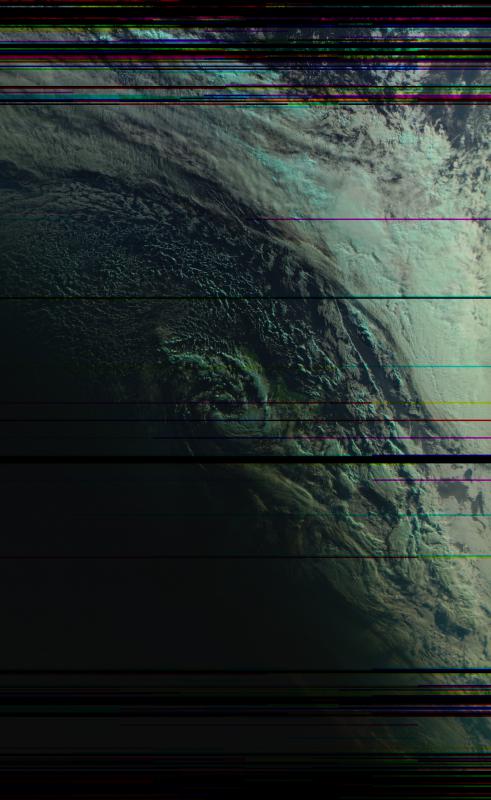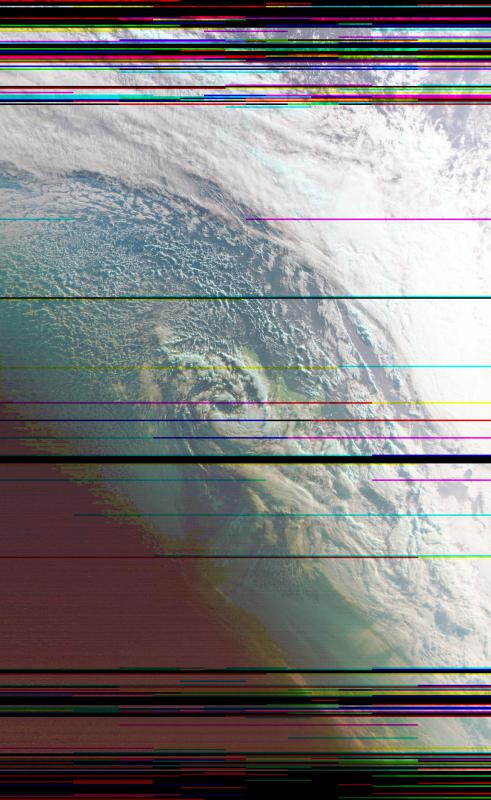When does it get “light”?
It seems like a simple question and if you Google “dusk” it’ll even give you a precise answer down to the minute for your location. But it isn’t that simple and this morning’s Meteor M-2 pass can help illustrate this.

The bottom left of the image is clearly showing that it is dark and the top right part of the image is clearly light, but there is a gradation between where it is really dark and where it is light. So there is no simple definition for when it first gets light.

The image above used the first image, but it did a histogram equalization. This means that it distributed the brightness of each point of the image across the range from zero brightness to full brightness. This lets you just about pick out the North Island of New Zealand and part of the South Island, clearly showing it gets light earlier in the North Island than the South Island.
So back to the question, when does it get “light”. There are three formal definitions for this time:
- Astronomical dawn – when the sun is 18 degrees below the horizon
- Astronomical twilight / Nautical dawn – when the sun is 12 degrees below the horizon
- Civil dawn – when the sun is 6 degrees below the horizon
- Sunrise – when the sun crosses the horizon
It seems counter intuitive that the different dawn definitions start when the sun is below the horizon. However there is enough sunlight which is lighting up the sky above you so that you can start to see objects or that you start to not be able to see dim stars.
And of course the same applies for when does it stop to be “light” with a similar set of definitions covering the time until the sun is below the horizon by a set number of degrees.